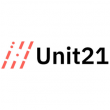Why Java-based viewing integrations are essential for fintech applications
Fintech software has become a critical component of the financial services industry, allowing customers to readily access financial products on their own terms while also enhancing operational efficiency. Digital technology continues to revolutionise the way financial institutions operate, and developers work hard to create new applications that can manage workloads previously spread across multiple systems and software.

Accusoft’s VirtualViewer provides true cross-platform document support for your Java-based applications
Document viewing and sharing capabilities are among the most important features for fintech applications. While developers can use a variety of document lifecycle solutions to avoid the difficult task of building those features from scratch, the financial industry faces unique security and compatibility requirements when it comes to selecting integration partners. To fully understand these technical challenges, it’s important to understand the role of Java in the development of today’s fintech applications.
How Java became so important to the financial industry
Financial institutions were early adopters of computerised workflows. The first electronic communication network that made it possible to trade financial products outside the stock market floor was introduced in 1969. Computerised order flows became more widespread in the 1970s, with most institutions developing their own in-house systems. Digitisation really took off in the 1980s and early 1990s following the introduction of the Bloomberg terminal and the Financial Information eXhange (FIX) protocol. In the late 1990s, the Nasdaq made it possible to execute securities trades without manual intervention by adopting Island ECN.
Java burst onto the programming language scene in 1995, and its arrival proved to be well-timed. The late 1990s and early 2000s saw extensive mergers and acquisitions in the financial industry, which left many companies struggling to integrate disparate applications and data. Java programming language, with its ability to support multiple platforms (“Write once, run anywhere” was an early slogan used by Sun Microsystems) proved to be an attractive solution to this challenge, and many financial applications were ported into Java. It also helped that Java was easy to use and orders of magnitude faster than legacy code running on outdated platforms.
Within just a few years, Java became the dominant programming language for the financial services industry. Its popularity only accelerated after the release of OpenJDK, a free and open-source implementation of the language, in 2007. By 2011, an Oracle report estimated that over 80% of electronic trading applications and almost all FIX engines were written using Java. Even now, nearly 30 years after its introduction, Java remains the dominant programming language used by financial services, far outpacing other open-source alternatives.
Why the financial industry loves Java
Developers in the financial sector haven’t just stuck with Java for so long out of habit or inertia; Java’s distinctive features make it uniquely suited for the needs of financial applications, both for longstanding enterprise-grade banking systems and innovative new fintech solutions.
Security
It goes without saying that security is always a top consideration in the financial services industry. Banking and trading applications need to have security measures in place to protect financial data and personally identifiable information from unauthorised access. Java makes it easy to restrict data access and offers a variety of memory safety features that mitigate potential vulnerabilities, especially those caused by common programming errors. Oracle also continues to provide regular updates that patch known vulnerabilities and account for the latest cybersecurity threats.
Portability
As a platform-independent language, Java applications can run on almost any device. This has always been a major advantage in the financial industry, but it has proved even more valuable in the age of cloud computing and mobile applications. Developers can use the same code to deploy software in a virtual environment and make it accessible to end-users from their smartphones, computers, or other devices. Java virtual machines also support other programming languages, which further enhances the language’s flexibility.
Reliability
Since Java has been in continuous use for nearly 30 years and enjoys support from a robust development community, it has become one of the most reliable programming languages in the world. Potential instabilities have long since been addressed and there are many developer tools and documentation available to ensure that software is built upon a strong foundation. This is critically important for banking and financial applications, which require high levels of performance paired with fault tolerance.
The need for Java-based document viewing and sharing
As fintech developers continue to build new applications that make life easier for customers and employees within the financial sector, they are increasingly finding that users expect more when it comes to viewing and sharing documents. Nobody wants to waste time and resources processing paper documents by hand, and most organisations want to avoid the security risks that come with relying on external applications for managing digital documents.
Unfortunately, today’s application users expect complex document viewing capabilities that are difficult for most developers to build from scratch. While there are several integrations available that can add document lifecycle features, most of them are not Java-based and require additional development work to incorporate them into existing fintech solutions. Without the ability to support viewing, sharing, and editing natively within the Java application, users often turn to workarounds involving external programmes, which creates security and version confusion risks.
Implementing Java-based document features with VirtualViewer
Accusoft’s VirtualViewer is a powerful HTML5 document viewing solution built from the ground up using Java to ensure maximum compatibility with fintech applications in the financial services industry while also meeting complex functionality and security requirements. With support for diverse document types, such as PDF, TIFF, JPEG, AFP, PCL, and Microsoft Office, VirtualViewer eliminates the need for multiple viewing solutions to create a better user experience within fintech software.
As a Java-based integration, VirtualViewer is compatible with almost any operating system and is both easy to implement and manage. No software needs to be installed on the user’s desktop, which allows fintech developers to roll out a scalable solution that meets their critical security and business continuity requirements within a single, high-speed application. VirtualViewer’s server component quickly renders and delivers individual document pages for local viewing as needed so users can access, view, annotate, redact, and manipulate financial documents on the fly. Since documents are displayed within the web-based viewer, there’s no need to download or transfer files, which enhances both security and efficiency.
When implemented as a replacement for a mortgage lender’s content management system, VirtualViewer made it possible to import and deliver more than half a million documents across the enterprise each day. Documents could be retrieved and viewed in under two seconds, contributing to a 40% improvement in mortgage processing times.
Enhance your Java fintech application with VirtualViewer
Accusoft’s VirtualViewer provides true cross-platform document support for your Java-based applications. Whether you’re deploying your application within the cloud, on-prem, or as part of a hybrid environment, VirtualViewer’s powerful APIs can instantly provide your software with the document viewing and sharing features your customers are looking for. Installing the viewer takes less than ten minutes, and our out-of-the-box connectors make it easy to quickly connect to leading ECM applications, including Alfresco, IBM, and Pegasystems.
See for yourself: take VirtualViewer for a test drive and experience all the features available for your Java-based application.
Sponsored by Accusoft











































